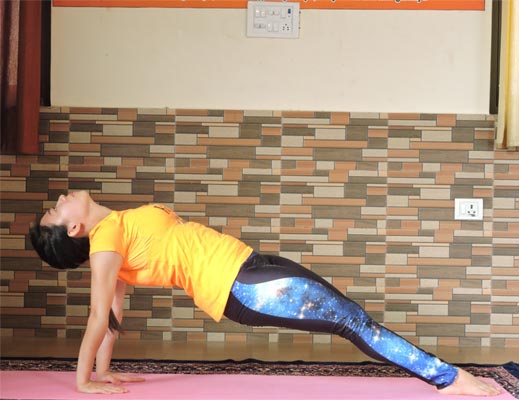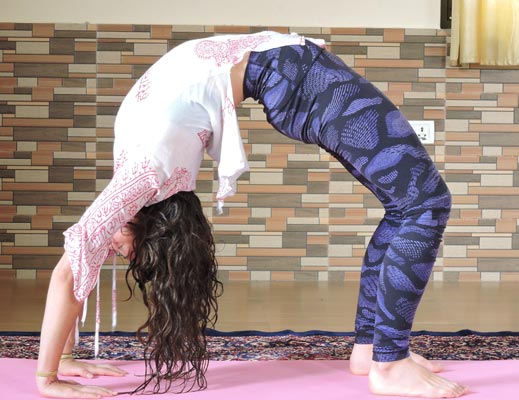Introduction
Asana is the third limb of Ashtanga Yoga system of great sage Patanjali. It is an important module of every
Yoga Teacher Training in India.Many of the classical texts on Yoga such as Patanjala Yoga Sutras,Hatha Pradeepika and Bhagavadgeetha brings the significance on the principles and practice of proper methodology of the technique. The higher objective of asana is to ensure the mind and body free from the pairs of opposites, so that there is perfect harmony for the experience of tranquility in meditation practice. There are various references of the concepts of asana in the most ancient civilizations such as harappan and Mexican.
Definition
Yoga sutras define the practice of asana as the stable and comfortable body position. These two principles are essential factors of the development of inner harmony and homeostasis conditions.
Procedure
Patanjala Yoga Sutras provide the precise explanation of the methodology Accordingly, The yoga poses are practiced with relaxed efforts along with the awareness on the infinite. Another important principle involves the long term, undisturbed dedicated practice for the solid ground in the technique. Strong faith, energy, memory and the knowledge of the task/technique plays a significant role in the successful achievement of the goal.
The practice of Asana mainly uses the isometric movements which are taking place while the joints are in still positions. The red muscle fibers play an active role during these movements and hence consume very less oxygen during the practice. This is useful in the economy of the caloric consumption and in the prevention of the muscle fatigue as well as reduction in the levels of the excess secretion of lactic acid in the blood.
Guidelines in the successful practice of Yoga Poses
The establishment of the solid foundation is achieved through the application of the following guidelines with consistency and firm conviction. They are ;
Foundation
Building the proper foundation before reaching the final pose of each asana ensures a safe and supportive ground for the gracious movements free from the fluctuations or instability.
Co-ordination
Breathing and the movements in the asana needs to be well controlled and coordinated with rhythmic inhalation and exhalation. This principle reduces the chance of undue strain, spasm and jerks during the practice.
Relaxation
It is important to relax the muscles in order to decrease the resistance of the muscles for the optimum stretching. Also, it is beneficial to maintain sufficient relaxation at the end of the complete practice of Asana session.
Key Pose
Final position of the pose is resulting period of asana, each posture is required to be maintained for at least five breathings. This is called as key pose and the practitioner really enjoys the amazing benefits from this particular stage.
Classification of Yoga Poses
According to the Classical texts, Asana is the foremost important module of
Hatha Yoga Training Curriculum. For the convenient understanding of the purposes they are divided into two main categories.
Meditative poses
These poses mainly serve the purposes of the long term practice of meditation. They are highly valuable for the stable mind and body.
Cultural poses
These asana contribute a lot for the development of the healthy body with proper proportions of the limbs and this is the principle of
Sarvanga Sundar concept. They bring the physical and mental health benefits with Relaxative approach.
Mechanism of Yoga Poses:
There are various mechanisms of yoga poses, some of them create intra -abdominal pressure, traction, squeezing and releasing mechanisms as well as the development of the sub atmospheric pressure.
10 Health Benefits of Yoga Asana practice
There are amazing health benefits for the disciplined practice of Yoga poses for long term with proper guidance of well qualified and experienced yoga teachers.
1. Boost of Immunity
The enhanced circulation in experienced various yoga poses leads to the promotion of the lymphatic activities and this brings the boost on the immune system in our body which is helpful in the development of resistance and prevention of the diseases.
2. Detoxification
The warm blood in the practice of yoga poses brings the great impact on the elimination of different types of toxins from the body. The profused sweating also enhances the natural detoxification of the mind and body.
3. Health
The physical and mental health, steadiness and the feeling of well being and lightness are the important advantages of regular asana practice. They are very effective in the establishment of the equilibrium conditions among psycho physiological-neuro muscular and glandular mechanisms of our body.
4. Metabolism
The practice of asana plays a significant role in the promotion of body metabolism. There is an effective absorption and assimilation of the nourishment as well as elimination of the wastes from the body.
5. Peace of Mind
The fickleness of the mind and restless nature are eliminated through the practices of yoga poses. This is key factor for the peace of mind, one pointedness and concentration. This collective experience brings the best possible mental health to the practitioners.
6. Postural Health
Asanas are efficient in the development of the postural health .The ideal body postures prevent the common implication of the postural defects such as back pain and neck pain. They relive the disturbances of the rhythm of the muscle tone which are the main causes of tremor and instability of the limbs in the body.
7. Productivity
The practitioner of Asana enjoy the higher productivity as they help in synchronization of the mind and body for better neuro muscular co ordination experiences .
8. Strength and Flexibility
There are free movements of various joints, the traction effects of different muscles and tendons and ligaments using the synergistic and antagonistic mechanisms in order to enjoy the great strength and flexibility.
9. Stress Management
There is deep relaxation from the physical, mental and emotional relaxation from the practice of yoga poses which are good for the effective stress management.
10. Weight management
Asana practices are effective for the endocrinal harmony, well balanced lipid profile, healthy metabolism as well as deep state of mental relaxation. These factors contribute a lot for the prevention of obesity and healthy body weight management.
Latest Blog
Learning the principles and techniques of yoga in Rishikesh is great accomplishment. The salubrious climate of the city...
Himalayas are the stunning attractions of the beauty on the earth. There is abundant divine energy within the ranges of these...
Rishikesh is world renowned destination to learn yoga in India. The city is nestled in the lap of the beautiful nature...





